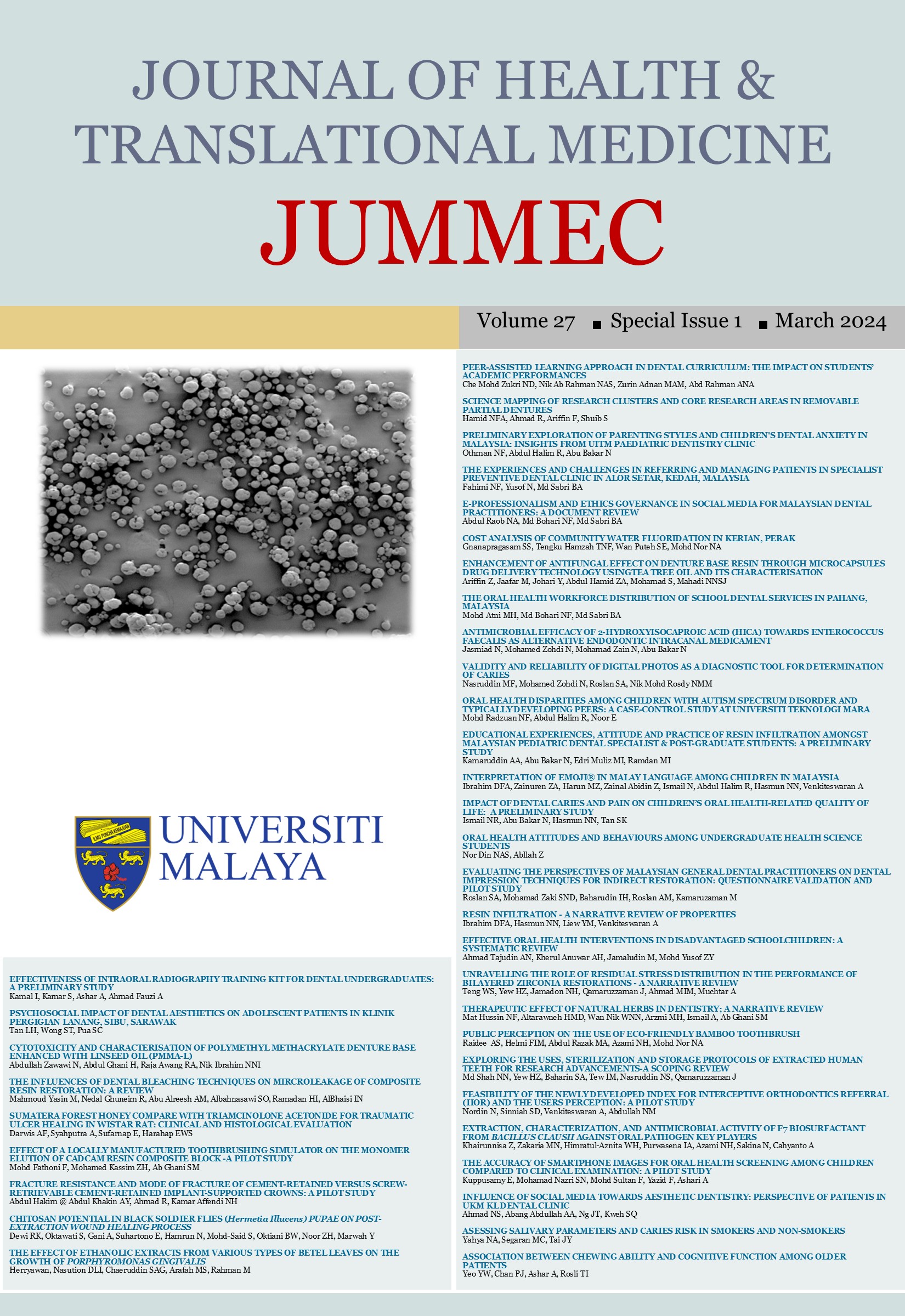IMPACT OF DENTAL CARIES AND PAIN ON CHILDREN’S ORAL HEALTH-RELATED QUALITY OF LIFE: A PRELIMINARY STUDY
Received 2024-02-19; Accepted 2024-03-02; Published 2024-03-25
DOI:
https://doi.org/10.22452/jummec.sp2024no1.14Abstract
The Malay language Child Oral Health Impact Profile–Short Form 19 (ML COHIP-SF 19) is a validated self-administered questionnaire designed for a wide age range of children to measure the impact of clinical conditions on the children’s oral health-related quality of life. This study aimed to compare the oral health-related quality of life (OHRQoL) between children with and without dental caries, and between children with and without dental pain among children aged 9-to-16-year-old using the newly validated Malay language COHIP-SF 19 (ML COHIP-SF 19) questionnaire. Children who aged 9-to-16-year-old, attended the Faculty of Dentistry, Universiti Teknologi MARA (UiTM) and Al Amin Tropicana School Sungai Buloh, Malaysia, who understood Malay language were invited to participate in this cross-sectional study. Those with low literacy in Malay language or presented with acute dental abscess and/or fistula, cognitively impaired, or had other chronic illnesses were excluded. After informed consent and assent were obtained, the children were invited to complete a questionnaire consisting of demographic details, ML COHIP-SF 19, and Faces Pain Scales-Revised. Subsequently, the children underwent dental examination. Dental caries were documented using the International Caries Detection and Assessment System (ICDAS). Data were statistically analysed using an independent t-test, Spearman’s correlation test and multiple regression analysis. Although not statistically significant (p=0.34), children with dental caries were found to have a lower mean total ML COHIP-SF 19 score (52.83±8.74) compared to children without dental caries (55.11 ±11.10). The prevalence of pain experience among the children was 52.9%. Children with dental pain had a significantly (p<0.01) lower mean total ML COHIP-SF 19 score (50.57±9.40) compared to those without dental pain (57.79±9.33). Besides, males (β=-4.65, p=0.03), younger children (β=-1.26, p=0.02, those without previous pain experience (β=-4.64, p=0.03), and children who rated their oral health status more positively (β=4.46, p<0.01) had better OHRQoL. Children who had no previous dental pain demonstrated better OHRQoL compared to those with a history of dental pain. Besides, no significant differences in OHRQoL were observed between children with and without dental caries.
Downloads
Downloads
Published
Issue
Section
License
All authors agree that the article, if editorially accepted for publication, shall be licensed under the Creative Commons Attribution License 4.0 to allow others to freely access, copy and use research provided the author is correctly attributed, unless otherwise stated. All articles are available online without charge or other barriers to access. However, anyone wishing to reproduce large quantities of an article (250+) should inform the publisher. Any opinion expressed in the articles are those of the authors and do not reflect that of the University of Malaya, 50603 Kuala Lumpur, Malaysia.


